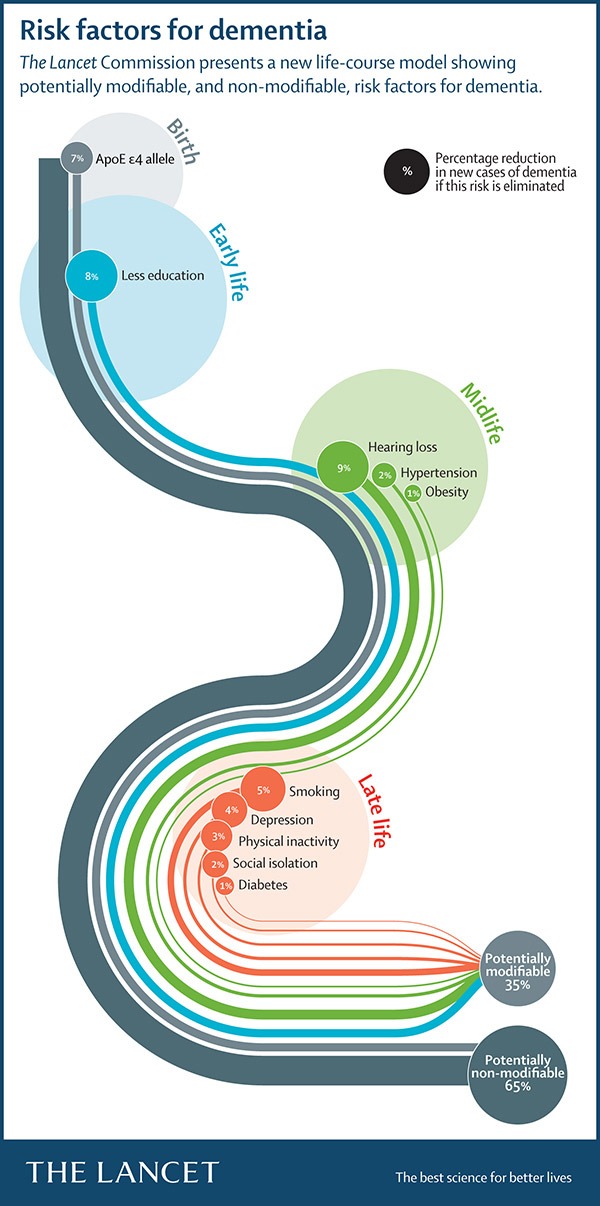Brain imaging show that patients with Alzheimer’s disease can still remember and enjoy their favorite songs
 ___
___
Music Activates Regions of the Brain Spared by Alzheimer’s Disease (University of Utah):
“Ever get chills listening to a particularly moving piece of music? You can thank the salience network of the brain for that emotional joint. Surprisingly, this region also remains an island of remembrance that is spared from the ravages of Alzheimer’s disease. Researchers at the University of Utah Health are looking to this region of the brain to develop music-based treatments to help alleviate anxiety in patients with dementia. Their research will appear in the April online issue of The Journal of Prevention of Alzheimer’s Disease…
For three weeks, the researchers helped participants select meaningful songs and trained the patient and caregiver on how to use a portable media player loaded with the self-selected collection of music.
“When you put headphones on dementia patients and play familiar music, they come alive,” said Jace King, a graduate student in the Brain Network Lab and first author on the paper. “Music is like an anchor, grounding the patient back in reality.”

The shaded areas were activated by familiar music.
Using a functional MRI, the researchers scanned the patients to image the regions of the brain that lit up when they listened to 20-second clips of music versus silence. The researchers played eight clips of music from the patient’s music collection, eight clips of the same music played in reverse and eight blocks of silence. The researchers compared the images from each scan.
The researchers found that music activates the brain, causing whole regions to communicate. By listening to the personal soundtrack, the visual network, the salience network, the executive network and the cerebellar and corticocerebellar network pairs all showed significantly higher functional connectivity.
“This is objective evidence from brain imaging that shows personally meaningful music is an alternative route for communicating with patients who have Alzheimer’s disease,” said Norman Foster, M.D., Director of the Center for Alzheimer’s Care at U of U Health and senior author on the paper. Language and visual memory pathways are damaged early as the disease progresses, but personalized music programs can activate the brain, especially for patients who are losing contact with their environment.”
News in Context:
- Music as Therapy: Music, Movement, Cognition!
- What Educators and Parents Should Know About Neuroplasticity and Dance
- Study: 46.7 million Americans have Alzheimer’s Disease brain pathology today, so it’s urgent to prevent or at least delay progression to clinical disease
- Report: 35% of worldwide dementia cases could be prevented by modifying these 9 modifiable risk factors




Therefore, the physician will evaluate the cardiovascular system, lungs, and other organs for any signs of abnormalities. Because sensory losses can add significantly to a person’s cognitive difficulties, the doc- tor will also test vision and hearing. The physician will also pay close attention to the nervous system, because neurologic abnormalities may signal a brain disorder other than Alzheimer’s disease.
And Happy New Year!